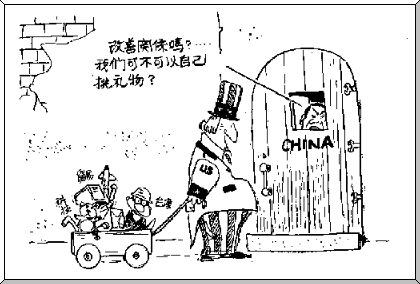
An issue which continues to mar US-China relations is the John Huang / Lippo case. On 13 February 1997, the Washington Post reported that the Chinese Embassy in Washington DC had been involved in attempting to raise funds to donate to the Democratic national Committee, with the purpose of influencing US policy on China.
On 10 November 1996 the London Times reported that the John Huang connection and the Indonesian/Chinese Lippo Group may have been part of a Chinese spy operation designed to gain insight information on matters like the United States negotiating position on Most Favored Nation status. Subsequently, two other major publications, the New York Times and the Wall Street Journal published reports presenting indications that this may have been the case.
On 3 January 1997, the New York Times printed an article by columnist William Safire (published as "Has Chinese intelligence penetrated the White House" in the International Herald Tribune, 4 January 1997), in which the author points to a number of pieces of evidence which indicate that the Chinese were able to get a significant amount of confidential information.
A second investigative article was written by Mr. Peter Schweizer and published in the Wall Street Journal ("Lippo's Chinese Connections", 15 January 1997). Mr. Schweizer states that "Questions swirling around former Deputy Assistant Commerce Secretary John Huang, the Lippo group of Indonesia and the fund-raising activities of Charles Yan Lin Trie may well be linked by the shadowy efforts of the Chinese military to influence U.S. foreign and military policy."

China to the U.S.: "I want to select my own goodies."
Mr. Schweizer presents detailed information on the links between John Huang / Lippo and the Chinese military establishment, in particular COSTIND, the Chinese Commission on Science, Technology and Industry for National Defense.
The article refers to the meeting arranged with Mr. Clinton at the White House by another operative in the affair, Arkansas restaurant owner Charlie Trie, for Mr. Wang Jun, a Chinese arms dealer, who is chairman of Poly Technologies, a front for COSTIND. Mr. Wang also happens to be the son of one of China's most vengeful hardliners, Wang Zhen. During the Tienanmen Incident, the older Wang was one of the most relentless advocates of crushing the pro-democracy movement.
Mr. Schweizer describes how COSTIND and its front organizations such as Poly Technologies manage arms sales to countries such as Iraq, North Korea and Pakistan, how they acquire advanced dual use technologies to assist in the modernization of the PLA, and, thirdly, serve as conduits for intelligence operations.
Mr. Schweizer argues that in gaining access to the upper levels of the Commerce Department, the Chinese were probably most interested in gaining access to high technology, in particular dual-use technologies, which have both civilian and military applications.
The article gives several examples when the Commerce Department, which is responsible for licensing exports for dual-use items, overrode objections from U.S. military and intelligence officials, and approved the export of machine tools (the McDonnell Douglas case we described earlier) and of AT&T telecommunication technology to China. The latter case involved Asynchronous Transfer Mode (ATM) and Digital Synchronous Hierarchy equipment to HuaMei Company. Pentagon officials in 1994 warned Commerce that such equipment would greatly enhance the capability of the Chinese military in their command and control of military operations. At Commerce, the warnings fell on deaf ears.
Back to: Taiwan, Ilha Formosa homepage